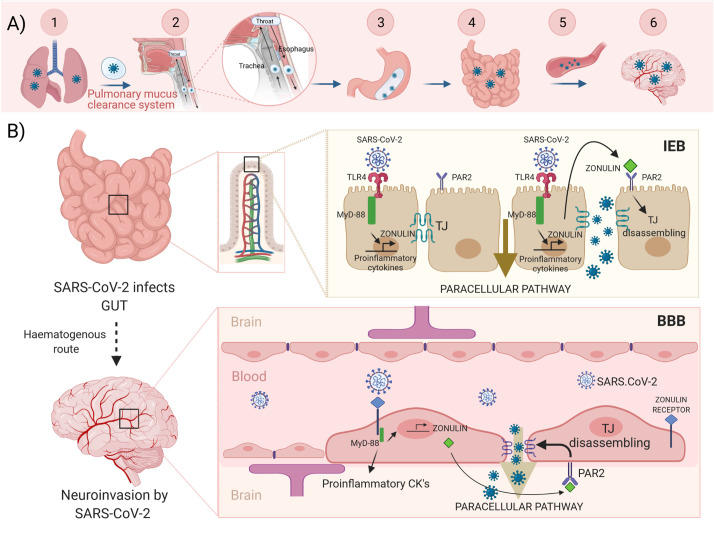Figure 1.
Hypothesis illustrated. Upper panel (A) Scheme of the SARS-CoV-2 journey towards to the brain: 1.-Infected lungs. 2.- The pulmonary mucus clearance system. 3.- Enteroinvasion. 4.- An increased intestinal permeability allows the virus to access the bloodstream and spread. 5.- Haematogenous route. 6.- Neuroinvasion. Lower panel (B) SARS-CoV-2 virus reaches the intestine protected by the mucus from infected lungs. The virus can bind and activate the TLR4, which via MyD-88 could activate both zonulin and proinflammatory cytokines expression. Zonulin, secreted to the lumen, binds with PAR2 inducing disassembling of TJ. Now, the virus can use the paracellular pathway to access the circulatory system and reach the brain. Zonulin can also access to the bloodstream. Then, the virus, via brain zonulin receptor, can induce expression of zonulin and consequently increase permeability of the BBB by inducing disassembling of TJ. This causes neuroinvasion of the virus. TLR4, toll-like receptor 4; MyD-88, myeloid differentiation primary response gene 88; PAR2, protease-activated receptor 2; TJ, tight junctions; IEB, intestinal epithelial barrier; BBB, blood-brain barrier. Created with BioRender.com.

